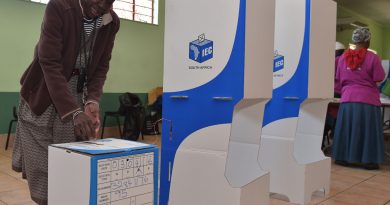U.S. Pressure and Mounting Security Concerns Push NATO Allies to Increase Defense Spending
By Catherine Doolan
Staff Writer
On March 15, NATO Secretary General Jens Stoltenberg announced in his annual report that European allies and Canada increased their defense spending by nearly 5 percent in 2017. NATO’s 29 allies invested over $900 billion, with two-thirds of that total coming solely from the United States.
According to the North Atlantic Treaty Organization, Secretary General Stoltenberg added that, “All NATO members have pledged to continue to increase defense spending in real terms. The majority have already put in place plans on how to meet the 2% guideline by 2024. And we expect others to follow.” The annual report highlighted how allies are specifically investing more in operations and missions, demonstrated by greater troop deployments. The Secretary General attributed these increased contributions to the rise of ISIS, and other radical Islamic terrorism, as well as Russia’s annexation of Crimea in 2014.
The United States contributed the greatest amount to NATO defense spending in 2017, at 68.7 percent of the total. This was 3.57 percent of the United States’ overall economic output on defense in 2017, which according to The Washington Post, illustrates the United States’ continued role as a global superpower. Despite increased defense spending by many NATO allies, Belgium cut 0.73 percent of its defense spending and Greece and Britain also decreased their spending while still maintaining their pledges.
Although, the annual report showed that Estonia, Greece, Poland, and Britain reached a 2 percent national economic output for annual defense spending, which was a benchmark agreed upon at a 2014 NATO summit. During his presidential campaign U.S. President, Donald Trump, criticized NATO and accused other world powers of taking advantage of American defense contributions to international security. Reuters reported that President Trump called the 2 percent target a “bare minimum.” Lithuania, Romania, and Latvia are expecting to reach the 2 percent target in 2018.
Defense spending by NATO allies has an impact on other global issues. President Trump recently announced U.S. steel and aluminum tariffs to protect American industries, which resulted in harsh retaliatory actions threatened by other nations against U.S. products. On March 22, Politico stated that, the Trump Administration announced it would exempt the European Union, Australia, Argentina, Brazil and South Korea from the steel and aluminum tariffs set to take effect on March 23. However, according to Defense News, U.S. Treasury Secretary Steve Mnuchin announced, on March 9, that allies seeking exemptions from the tariffs may be asked to increase their defense contributions to NATO.
The increase in NATO defense spending elucidates global fears of Russian modernization and expansion. Analysts believed that Bulgaria increased its defense spending because of fear of Russian dominance in the Black Sea region. Germany, who heads a group of NATO troops in the Baltic and Norway, a neighbor to Russia, also increased their defense spending from 2016, reported Reuters. The United States repeatedly told its European allies that NATO’s power and influence cannot be declining as other nations such as China and Russia are rapidly increasing their budgets and defense spending.
Growing geopolitical instability has caused NATO allies to reconsider their defense spending. Russia may begin to test NATO’s strength by putting pressure on certain regions of Europe. Frequency of terrorist attacks in Europe, the Middle East and Northern Africa will affect NATO allies’ perspectives on defense spending. It is clear that the future of defense spending by NATO allies may deter or encourage these global patterns of behavior.


